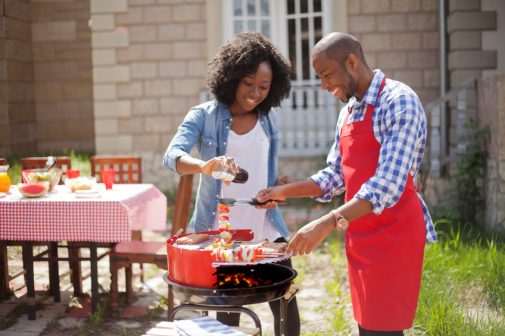Here’s how to have a great cookout

Family cookouts and barbecues with friends are often the highlights of summer. But how can you be sure you are serving up the safest food for your guests? Amy Strutzel, a registered dietitian at Advocate Condell Medical Center in Libertyville, Ill., suggests these three simple steps to ensure you host the perfect summer cookout.
Disinfect
Before you start cooking, make sure you have clean hands. If soap and warm water are not available, bring hand sanitizer to kill off any unwanted bacteria.
Strutzel warns, “Don’t forget to dry your hands thoroughly as well, because if they are wet, they spread bacteria more easily.” Also, be sure to disinfect the cooler, tote bag, picnic basket or whatever you are using to transport food. While this might seem like common sense, it is the first step to guaranteeing the food you serve is safe.
Separate
Make sure to separate your raw meat, fish and poultry from other food at the cookout, such as cheeses, fruits or vegetables. According to the United States Department of Agriculture’s Barbecue and Food Safety Guidelines, “harmful bacteria present in raw meat and poultry and their juices can contaminate safely cooked food.”
Strutzel recommends using one set of utensils and plates to handle the raw food and another to handle and serve the cooked food. Following this step will cut down on bacteria being spread.
Monitor
Once you start cooking, use a food thermometer to check the internal temperature of your meat, fish or poultry.
“Eating undercooked or raw poultry or red meat increases your risk of becoming infected with salmonella. Symptoms include abdominal cramps, fever and diarrhea, and begin within 12 to 72 hours of consuming contaminated food. These symptoms can last up to a week, and in certain cases, can be fatal if you have a compromised immune system,” says Strutzel.
In addition, eating undercooked ground beef can result in E. coli. “E. coli can cause symptoms including diarrhea, vomiting and stomach cramps. These symptoms usually occur between two and eight days after eating contaminated food and can last for up to a week,” says Strutzel.
She also lists safe internal temperatures for different types of meat to ensure that you do not serve your guests undercooked or raw food.
- Steaks and roasts: 145 ̊F
- Pork: 145 ̊ F
- Fish: 145 ̊ F
- Ground Beef: 160 ̊ F
- Chicken: 165 ̊ F
Finally, remember to keep hot food hot and cold food cold. “Food should not be left out for more than two hours and not more than one hour when it is hotter than 90 degrees outside,” says Strutzel.
Follow these easy rules to ensure your guests have a safe and enjoyable summer cookout without any food-related illnesses.
Related Posts
Comments
About the Author
health enews staff is a group of experienced writers from our Advocate Health Care and Aurora Health Care sites, which also includes freelance or intern writers.

















